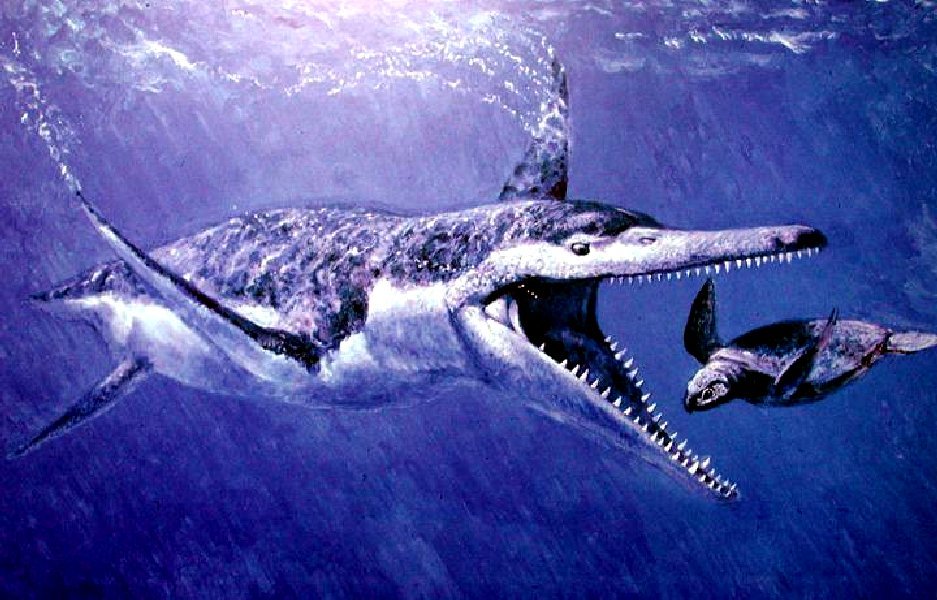Discovery of Aquatic Dino Big Enough To Munch Economy Cars

By Alister Doyle, Environment Correspondent
OSLO (Reuters) - The fossil of a 15 meter (50 ft) long "sea monster" found in Arctic Norway was the biggest of its kind known to science with dagger-like teeth in a mouth large enough to bite a small car, researchers said on Wednesday.
"It's a new species and the biggest proven pliosaur," Joern Hurum, a paleontologist at the Natural History Museum in Oslo who led the expedition to dig up the fossil on the archipelago of Svalbard 1,300 km (800 miles) from the North Pole.
"A small car could fit inside its mouth," he told Reuters, adding the lower jaw was about three meters (10 ft) long. "Something like a Morris Minor would fit perfectly."
The Museum said that pliosaurs were the top marine predators of the Jurassic era, preying upon squid-like animals, fish, and other marine reptiles.
Another type of fossil marine reptile, the ichthyosaur, was bigger at up to 23 meters (75 ft). "The pliosaur is not the biggest sea monster but it's probably the most fierce," Hurum said, adding the fossil has jagged teeth the size of cucumbers.
"The front flipper of our pliosaur alone is three meters long. We've laid it out downstairs in the basement," he said.
Earlier estimates had been that the Norwegian pliosaur, popularly dubbed "The Monster," was about 12 meters (40 ft) long, roughly as long as Australia's kronosaurus.
The Arctic find "demonstrates that these gigantic animals inhabited the northern seas of our planet during the age of dinosaurs," said Patrick Druckenmiller of the University of Alaska Museum who was on the expedition that found the fossil.
The Norwegian museum said that it was planning to return in mid-2008 to excavate a skull and skeleton of another gigantic pliosaur recently found near "The Monster."
Labels: aquatic dinosaur, conspiracy, pliosaur, sea monster






